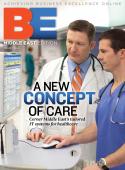Sticking to the plan┬áA forward-looking facilities master plan has helped guide the renovation and maintenance decisions of Tarrant County College District for the past five years and will do so for years into the future, Andrew Pelis discovers. Education is one of the cornerstones of society. Maintaining learning centers in the face of growing demand, increasing population and aging buildings can present real challenges to the community. Such has been the experience in one corner of Texas. Tarrant County College District, located close to Fort Worth, is nearly a quarter of the way through an ambitious 20 year master plan for improvements. Faced with a growing population and the need for wholesale maintenance work, by 2004 TCCD decided it needed to take a closer look at how to resolve its difficulties and how best to create a long-term strategy for improvement. Since opening in 1965, Tarrant County College District has built up an excellent reputation for its police, fire and aviation training along with its nursing and allied health courses. From September 2007 to August 2008, the college catered to nearly 59,000 credit students and an additional 31,000 students attending continuing education courses. David Wells, vice chancellor, operations & planning, takes up the story. ÔÇ£Tarrant County is the fastest-growing large county in the US. In the past five to eight years there has been increased migration to the area, and our master plan was drawn up partly to respond to increasing growth in enrollment and population growth in Tarrant County, but also to address the need for renovation of our existing buildings and facilities, many of which were over 30 years old.ÔÇ£In June 2004,ÔÇØ Wells continues, ÔÇ£we engaged the architectural, engineering and planning firm Freese and Nichols to produce a facilities master plan for all four of TCCDÔÇÖs campuses. The analyses and recommendations were to consider the impact of a new fifth campus planned for downtown Fort Worth. We used the results of their work to decide a way forward for the next 15 to 20 years.ÔÇØLocal company The Projects Group (TPG) and regional based Parsons subsequently formed a joint venture called TPG + Parsons to help TCCD develop and manage its 20-year master plan and then advise TCCD on implementing that plan.┬á Marvin Daniels, vice president with Parsons, is the program manager for the project and explains the theory put into place. ÔÇ£The purpose of the facilities master plan is to provide a process for TCCD to make informed decisions, manage growth in an orderly fashion, and guide the physical evolution of the campuses. ÔÇ£It took about a year to validate the plan to review the analysis and confirm the need for building maintenance priorities,ÔÇØ Daniels continues. ÔÇ£In addition to new project construction and major renovation projects, we had to take into account life safety requirements such as fire alarm upgrades, emergency exit lighting and door and hardware change-outs to satisfy new code compliance considerations. It was crucial that we determine the value of each project, so for example, if there is a roof in need of repair on a building with a life expectancy of only three to four years, we use temporary measures to fix the problem and provide a better economical solution.ÔÇØ Before work begins, a budget is developed, Daniels explains. ÔÇ£In our first week here we validated the master plan, including conveying a realistic budget for getting all the work done. We took the 20-year master plan and divided it into five-year increments, beginning with 2005. Following a number of meetings with TCCD and cost estimators, we developed a $450 million budget for the first five years.ÔÇ£TCCD is in a unique position, as this is very much a ÔÇÿpay-as-you-goÔÇÖ program. Tax revenues have accrued over a period of time, which has been advantageous, as weÔÇÖve been able to plan and prioritize far earlier. As a result, when we met with designers from the outset, we could discuss problems and make decisions far quicker since most of the funding was already in place, rather than having the need to raise funds through bonds. Additionally, this meant we could award contracts and buy materials more quickly, which has of course helped to head off inflation.ÔÇØ The TCCD project has another advantage, in that it is administered through construction manager at risk (CMAR), meaning contractors became involved at an early stage of the design phase and were able to identify problems much earlier in the process.The District and the Board of Trustees are striving for LEED Silver certification, where practical, on all their major projects. Even where they canÔÇÖt practically achieve LEED Silver, Daniels says they are pursuing the ÔÇ£spiritÔÇØ of the LEED standards implementation.┬á While the 20-year master plan has created hundreds of jobs, finding the right skills locally and initially was not easy. ÔÇ£The first couple of years presented the odd challenge in terms of hiring the right workers,ÔÇØ explains Wells. The project was simultaneous to the construction of the new Dallas Cowboys stadium and other projects in the region. ÔÇ£That challenge now seems to have reduced, and weÔÇÖre now finding more resources than before,ÔÇØ assures Daniels. Perhaps the most significant development in the master planÔÇÖs first quarter has been the renovation of a fifth campus in an office complex previously and partially occupied by Radio Shack Corporation. ÔÇ£In June 2008 the board of trustees decided that it was more cost-effective for us to purchase this complex and renovate it than to proceed with existing plans for an expansive new Trinity River campus,ÔÇØ states Wells. ÔÇ£Having bought the Radio Shack complex, we put the original new campus work on hold and have concentrated on converting the Radio Shack complex 900,000 square feet of space there into usable floor space. We will occupy half of that space in September 2009,ÔÇØ he adds.Daniels believes that the present economic downturn will have less impact on TCCDÔÇÖs plans going forward than may be expected. ÔÇ£Freese and Nichols are currently reviewing the master plan and will be presenting any changes in ÔÇ£in the 20-year viewÔÇØ in November 2009. We will look again at how we intend to spend the money for the second phase but are not anticipating significant changes.ÔÇØThe new downtown campus of Tarrant County College will be dedicated to student learning and community outreach. TCCD hopes to add educational value to the community way beyond the 20 years of its master plan. ÔÇô Editorial research by Dan Finn┬á









